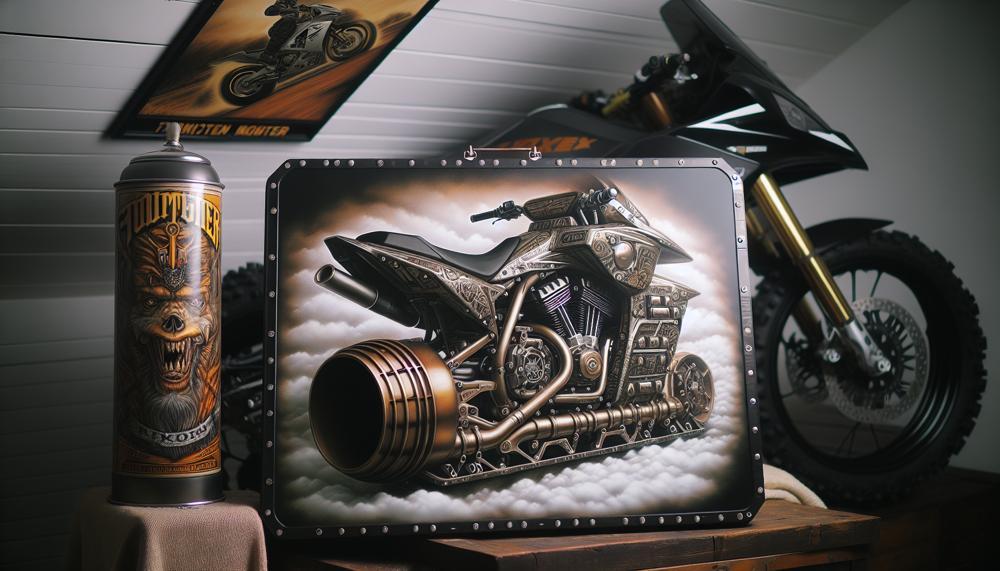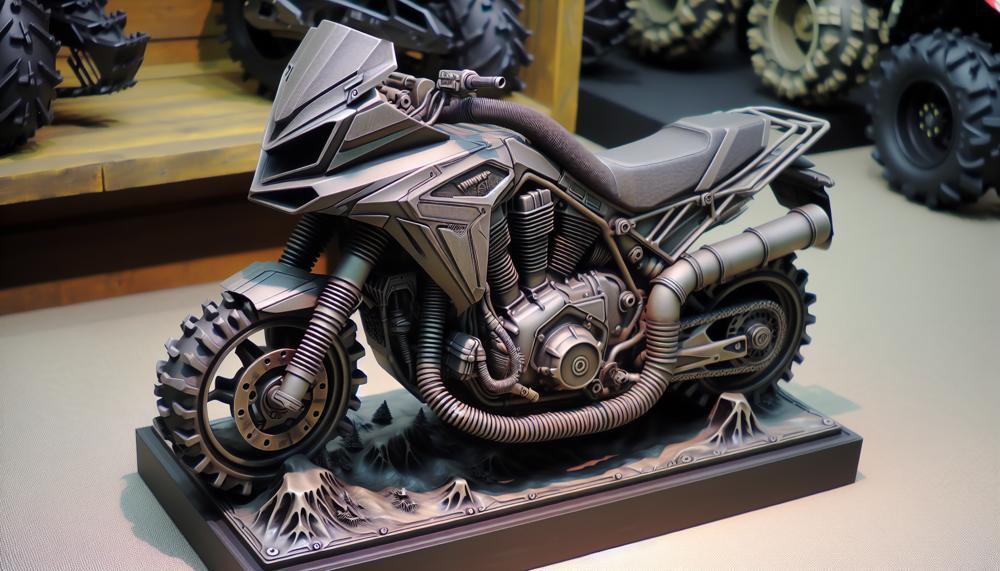As the snow begins to fall and winter sets in, snowmobilers gear up for another season of exhilarating rides through snowy landscapes. But what if I told you that there’s a way to take your snowmobiling experience to the next level? What if I told you that it’s possible for a snowmobile to run without an airbox?
It may sound like a crazy idea, but it’s gaining popularity among riders and mechanics. The airbox, responsible for filtering air before it enters the engine, can actually be removed to potentially improve performance and efficiency.
But how does this work? Without the restriction of an airbox, the engine can suck in more oxygen-rich air, resulting in increased power and acceleration. And with less weight from the removed component, handling on rough terrain could also improve.
Of course, this modification has its controversies and potential drawbacks. Some worry about the effects on engine longevity or excessive noise pollution. However, many are willing to take the risk for a chance at an even more thrilling ride.
So bundle up as we dive into the world of snowmobiles running without an airbox. We’ll explore both sides of the argument and help you decide whether it’s worth trying out for yourself.
Get ready for an exciting journey through this unconventional approach to snowmobiling.
What Does The Airbox Do For A Snowmobile?
Contents
The air box is a critical component of a snowmobile that has a significant impact on its overall performance. It plays a crucial role in regulating airflow, protecting the engine from harmful debris, and ensuring efficient combustion.
Without an air box, the operation of a snowmobile is not advisable due to the potential negative effects on its performance.
Regulating Airflow:
One of the primary functions of the air box is to filter and regulate the air that enters the engine. This ensures that the engine receives the proper amount of air for optimal combustion and performance.
Without an air box, unfiltered air can enter the engine, leading to decreased performance and potential damage.
Protecting the Engine:
Snowmobiling often takes place in harsh environments, making it vulnerable to debris such as dirt, dust, and water. The air box acts as a protective barrier for the engine, preventing these harmful elements from entering and causing damage.
Removing the air box exposes the engine to these elements, which can result in costly repairs in the long run.
Efficient Combustion:
Another crucial role of the air box is to provide a proper mixture of air and fuel for efficient combustion. This results in better fuel efficiency and improved overall performance.
Without an air box, there is a risk of an improper mixture, which can have a negative impact on the snowmobile’s performance.
Can A Snowmobile Function Without An Air Box?
While it is technically possible to operate a snowmobile without an air box, it is highly discouraged. As mentioned above, the air box plays vital roles in regulating airflow, protecting the engine, and ensuring efficient combustion.
While removing it may provide short-term performance gains, it can ultimately lead to long-term engine damage and decreased overall performance. Therefore, it is not advisable to operate a snowmobile without an air box.
In conclusion, the air box is an indispensable component of a snowmobile that significantly affects its performance. It is responsible for regulating airflow, protecting the engine, and ensuring efficient combustion.
While it may be tempting to remove the air box for modifications or enhancements, it is crucial to consult professionals and maintain the equipment for safe and efficient riding.
Meltdowns Versus Keeping Cool Under Pressure
Snowmobiling can be a thrilling and exhilarating activity, but it also requires a certain level of skill and responsibility.
When faced with a potential mechanical issue, such as a missing airbox, it is crucial to keep your cool and stay focused in order to handle the situation effectively.
Here are some helpful tips for maintaining calm and focus while snowmobiling:
- Check the owner’s manual: Before hitting the trails on your snowmobile, make sure to familiarize yourself with its features and controls. This will help you understand potential issues that may arise and how to handle them.
- Practice operating the snowmobile: If you’re new to snowmobiling or riding a different model, it’s important to practice in a safe environment before venturing out. This will help you gain confidence in handling the snowmobile and improve your reaction time in case of unexpected obstacles.
- Maintain a safe speed: While it may be tempting to go full throttle on your snowmobile, it’s crucial to maintain a safe speed. This will allow you to react quickly to any potential hazards or obstacles on the trail.
- Be prepared with safety essentials: It’s always better to be prepared for emergencies or breakdowns while snowmobiling. Make sure to carry a first aid kit, tools, and extra fuel with you on your ride.
- Respect the natural environment: Snowmobiling takes place in beautiful natural landscapes, so it’s important to respect and protect them by sticking to designated routes and avoiding off-trail riding.
In addition to these tips, here are some specific steps you can take when faced with a potential mechanical issue, such as a missing airbox, while snowmobiling:
- Stay calm and assess the situation.
- If possible, try to fix the issue yourself using tools from your emergency kit.
- If the issue cannot be resolved, contact someone for assistance.
- If the issue significantly affects the performance of the snowmobile, consider ending your ride and getting it repaired before continuing.
- Always prioritize safety and never put yourself or others in danger for the sake of completing a ride.
So, maintaining calm and focus while snowmobiling is crucial for a safe and enjoyable experience. By following these tips and being prepared, you can confidently handle potential mechanical issues, like a missing airbox, and keep your ride running smoothly.
Snowpack Where It Doesn’t Belong
In places where snowpack is not typically found, such as roads or urban areas, it can build up and create unforeseen challenges for snowmobilers and their equipment. This can include affecting the stability and control of the vehicle, causing damage to its mechanical components, and posing a threat to other vehicles and pedestrians.
It is crucial for snowmobilers to be aware of these potential hazards and take necessary precautions when riding in areas with unexpected snowpack.
Snowpack where it doesn’t belong can have a significant impact on both the rider and their equipment. As an avid snowmobiler myself, I have experienced firsthand the dangers of riding in areas with hidden snowpack.
One winter, while riding through a residential area, I hit a patch of unexpected snowpack that caused me to lose control of my vehicle. Not only did this put me at risk of injury, but it also damaged my snowmobile’s suspension system.
It’s not just about the rider’s safety, though. Snowpack in urban areas can also pose a threat to other vehicles and pedestrians. One time, while riding in a busy city street, I encountered an unexpected pile of snow that had accumulated from plowing. This not only startled nearby pedestrians but also caused traffic to suddenly come to a halt as I navigated around it.
To avoid such hazards, snowmobilers must stay vigilant and adjust their riding style accordingly when encountering snowpack where it doesn’t belong. This means being prepared for sudden changes in terrain and maintaining control of the vehicle at all times.
New Versus “Vintage” Models Concerning the Airbox
There are numerous distinctions between new and vintage snowmobile models when it comes to the airbox. These include the design of the airbox, the type of filter used, and the fuel system.
- Design: Modern snowmobiles typically feature a sealed airbox that prevents debris and dirt from entering the engine. On the other hand, vintage models often have an open-air intake system that uses mesh screens or metal plates as filters.
- Filter: Up-to-date snowmobiles use foam filters in their airboxes, which are highly efficient at trapping dirt and debris compared to the mesh screens or metal plates found in older models.
- Fuel System: Another significant difference is in the fuel system used. Newer snowmobiles utilize electronic fuel injection, while older models rely on carburetors. Electronic fuel injection is more reliable and efficient, while carburetors may require more maintenance and tuning.
These variations in airbox design showcase the evolution of snowmobile technology. While newer models may offer enhanced efficiency and reliability, some riders still prefer the simplicity of vintage snowmobiles.
Regardless of the model, it is crucial for riders to regularly maintain and clean their airboxes to ensure optimal performance and longevity of their snowmobiles.
Other Potential Modifications for Your Snowmobile
Aside from removing the airbox, there are numerous other potential modifications that can be made to a snowmobile to enhance its performance and overall ride experience.
These include reconfiguring the carburetor, incorporating an aftermarket air intake, upgrading to a high-performance exhaust system, altering the gearing, installing a turbocharger, and adjusting the suspension and track.
Each of these modifications necessitates thoughtful deliberation and should only be undertaken by seasoned experts or with extensive knowledge and proper tools.
To truly optimize your snowmobile’s capabilities, it’s important to understand the intricacies of each potential modification. For example, rejetting the carburetor involves adjusting the amount of fuel and air mixture entering the engine to improve its overall performance. Similarly, installing an aftermarket air intake can increase airflow to the engine, resulting in more power and better acceleration.
For those looking for even more power and speed, upgrading to a high-performance exhaust system can make a significant difference. This modification allows for faster and more efficient exhaust flow, leading to increased horsepower and torque. However, it’s important to note that changing the exhaust system may also result in a louder and more aggressive sound.
Another modification that can significantly impact performance is altering the gearing. By changing the gear ratio, you can adjust the balance between top speed and acceleration to best suit your riding style. This is particularly useful for riders who prefer quick acceleration over reaching high speeds.
For those seeking maximum power gains, adding a turbocharger is often the go-to modification. This device compresses air entering the engine, providing a significant boost in horsepower and torque. However, it’s crucial to note that installing a turbocharger without proper knowledge and tools can lead to serious engine damage.
Lastly, adjusting the suspension and track can greatly affect handling and overall ride quality. By fine-tuning these components, you can achieve greater stability and control on any terrain.
Cutting Your Snowmobile Through The Snow
As a snowmobiler, it’s crucial to have a good grasp of cutting techniques to effortlessly navigate through deep snow without an airbox. These techniques utilize the power and weight of the sled to effectively cut through the snow, providing smoother and more controlled movements.
Depending on the terrain and snow conditions, there are various cutting techniques that can be utilized, including side-hilling, carving, and counter-steering.
Side-hilling involves riding on the side of a hill with one ski elevated and the other lowered towards the slope. This technique enables riders to maintain control while maneuvering through steep and uneven terrains. To execute this technique flawlessly, it’s essential to keep your legs bent and maintain a firm grip on the handlebar.
Another useful cutting technique is carving, which entails leaning into turns while keeping a low center of gravity. This technique is particularly beneficial when navigating through tight turns or deep snowdrifts. It requires balancing your weight on the outer ski while using the inner ski to dig into the snow for better control.
For more advanced riders, there is the counter-steering technique that requires quick reflexes and coordination. It involves turning the handlebars in the opposite direction of the turn, causing the sled to lean and cut through the snow more efficiently. This technique is handy when avoiding obstacles or navigating through narrow spaces.
Mastering these cutting techniques allows snowmobilers to confidently and safely navigate through deep snow without an airbox. However, it’s crucial to note that these techniques require practice and proper training before attempting them in challenging terrains.
Also Read: Are Snow Pants Supposed to be Baggy?
Conclusion
In conclusion, while the concept of running a snowmobile without an airbox may seem unconventional, it has gained traction among riders and mechanics alike. This modification is believed to enhance performance and efficiency by allowing the engine to draw in more oxygen-rich air and reducing weight for improved handling.

However, it is important to consider potential drawbacks and controversies surrounding this practice, such as its impact on engine longevity and noise pollution.
As we have delved into in this article, the airbox plays a crucial role in regulating airflow, protecting the engine from debris, and ensuring efficient combustion. Therefore, it is not advisable to operate a snowmobile without this essential component. In addition, when faced with mechanical issues while snowmobiling, it is vital to remain calm and focused for a safe and enjoyable ride.
Moreover, we must also be mindful of potential hazards like unexpected snowpack in urban areas and understand the differences between new and vintage snowmobile models when it comes to the airbox.
While newer models offer advanced features and technologies, some riders still prefer the simplicity of vintage models.
Ultimately, whether you choose to remove your airbox or make other modifications to your snowmobile, proper maintenance is crucial for optimal performance and longevity.






